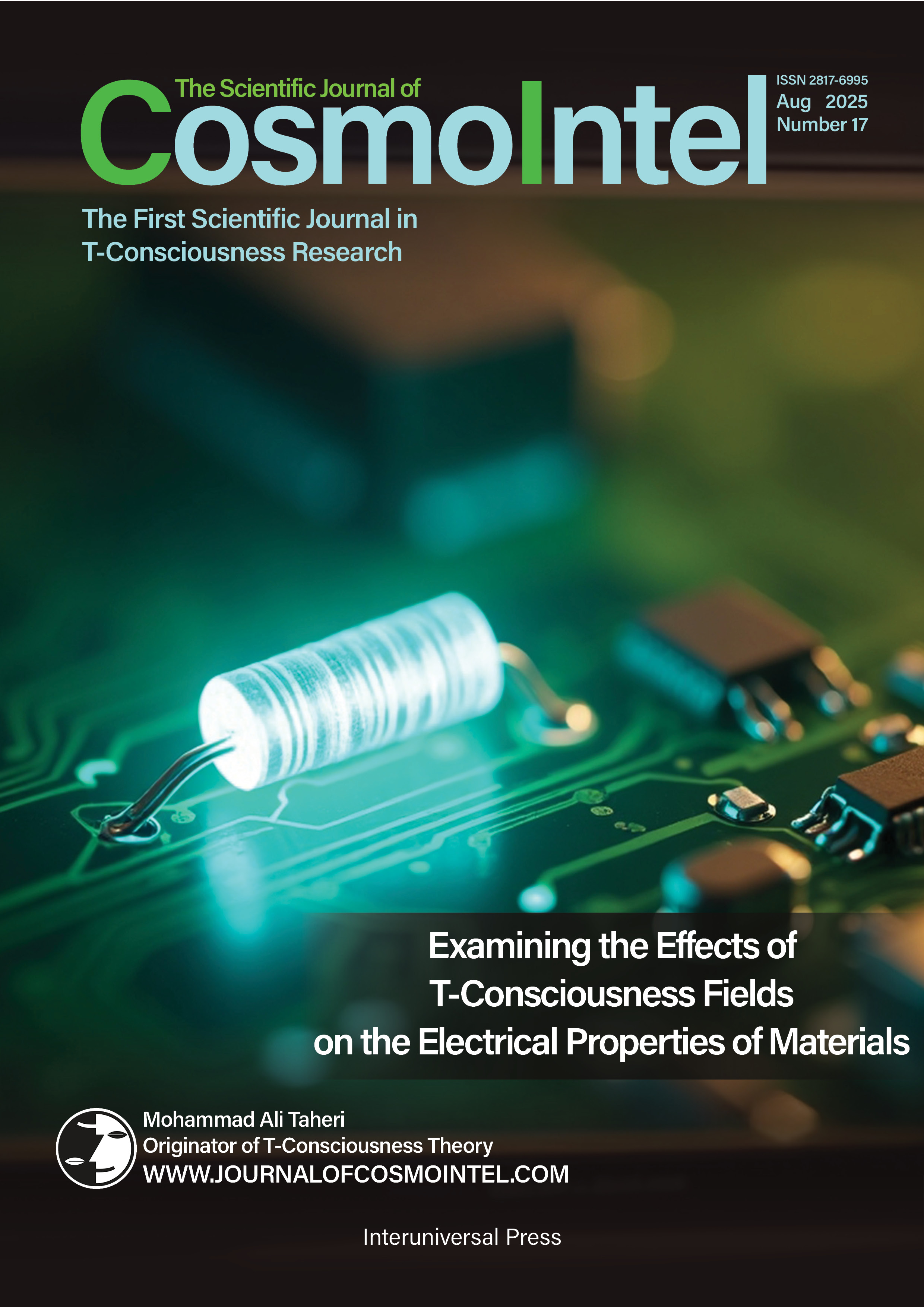Investigating the Effects of Various Types of T-Consciousness Fields at the Level of Temporal Subpopulations Derived from the Overall Population of DIP resistors
Main Article Content
Keywords
T-Consciousness Fields , Electrical Properties, 10kΩ DIP Resistor , Population Analysis, Uncertainty, Minimum Entropy, Shannon Entropy
Abstract
Following the analysis of the two general timeframes—before and after treatment—and the assessment of statistical significance, the data were further examined by dividing them into twelve distinct time intervals. This included: (I) The external control group, with all twelve intervals serving as controls (the first six labeled Control 1 and the latter six as Control 2), and (II) the T-Consciousness Field (TCF) groups, where the first six intervals represent the control phase and the second six intervals reflect the influence of a specific TCF. For each TCF, analyses included the frequency distribution of recorded values and paired comparisons of voltage and entropy (both minimum and Shannon) across the intervals. As in the previous section, nine components were randomly selected from the total number of treated samples for each TCF. The mean voltage, minimum entropy, and Shannon entropy were calculated across all twelve intervals. The results indicate that the application of TCFs consistently led to an increase in voltage across the resistors—a statistically significant and repeatable effect. Additionally, a general decreasing trend in both minimum entropy and Shannon entropy was observed over time in the TCF-treated samples. This suggests a reduction in randomness and noise within the recorded voltage values, implying a shift toward greater order and predictability in the system under the influence of TCFs.

